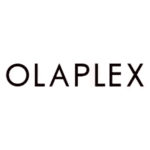TORM plc (TRMD) Stock Analysis

TORM plc (TRMD) Stock Analysis
Sector: Energy / Shipping (Tankers)
Analysis Date: February 20, 2025
1. Company Overview
TORM plc (TORM) is a product tanker shipping company engaged in the worldwide transport of refined oil products (gasoline, jet fuel, naphtha, etc.). With a fleet of product tankers (LR1, LR2, MR, and Handysize), TORM’s core business benefits from global refined product trade flows. The company is based in Denmark and listed in the U.S. (NASDAQ) and Denmark (Nasdaq Copenhagen).
Key Business Drivers:
- Product Tanker Demand: Driven by global oil consumption, refinery dislocations, and trade patterns.
- Charter Rates & Spot Market: Volatile tanker rates significantly impact TORM’s revenue and profits.
- Fleet Efficiency & Operational Scale: TORM’s modern fleet, commercial pools, and cost discipline matter for profitability.
- Dividend Policy: TORM distributes a large portion of earnings via dividends, leading to high yields in strong tanker cycles.
2. Financial Performance
a. Revenue & Growth
- TTM Revenue: $1.64 Billion
- Revenue Growth (YoY): +3.90%
Analysis:
TORM’s top line (~$1.64B) is closely tied to product tanker freight rates, which have been relatively strong. Growth slowed slightly from the high surge of 2022 (132.97% YoY), but remains healthy as the tanker market stabilizes.
b. Profitability
- TTM Net Income: $719.37 Million
- EPS (TTM): $7.70
- Profit Margin (TTM): 43.82%
Analysis:
Exceptionally strong net income (~$719M) underscores a favorable tanker rate environment. The profit margin of ~44% is unusually high for shipping, reflecting tight product tanker supply/demand fundamentals. Earnings per share is $7.70 on a trailing basis.
c. Margins
- Gross Margin: 58.19%
- Operating Margin: 41.79%
- EBITDA Margin: 52.48%
Analysis:
TORM’s operating margin (~42%) and EBITDA margin (~52%) are robust, reflecting strong charter rates and disciplined cost management. Shipping margins can be volatile, so these elevated levels indicate a cyclical upswing.
d. Free Cash Flow
- TTM Free Cash Flow: $312.72 Million
- FCF Margin: 19.05%
Analysis:
TORM’s free cash flow (~$313M) is strong, with a ~19% margin. High operating cash flows from favorable rates more than offset capital expenditures (primarily for fleet renewal/upgrades). This FCF supports dividends and balance sheet strength.
3. Balance Sheet & Liquidity
- Cash & Short-Term Investments (TTM): $414.30 Million
- Total Debt: $1.21 Billion
- Net Debt: -$798 Million (i.e., $798M net debt)
- Debt / Equity: 0.59
Analysis:
TORM’s net debt is $798M, with a moderate leverage ratio (Debt/Equity ~0.59). A current ratio of 2.47 indicates comfortable short-term liquidity. This is relatively solid for a shipping company, which often carries substantial debt to finance vessels.
4. Valuation
- P/E Ratio (TTM): 2.64
- Forward PE: 6.10
- EV/EBITDA (TTM): 3.07
- P/FCF (TTM): 6.07
- Dividend Yield (TTM): 30.03% (annualized)
Analysis:
TORM trades at a low trailing P/E (~2.6) and EV/EBITDA (~3.1), typical of shipping stocks during cyclical peaks. The forward P/E of ~6.1 suggests expectations of more normalized earnings ahead. The extremely high dividend yield (~30%) reflects TORM’s policy of distributing surplus cash in strong markets. However, shipping dividends can be volatile if rates soften.
5. Market Performance
- 52-Week Price Change: -43.01%
- Current Price: around $19.48
- Beta (5Y): -0.06
Analysis:
Despite strong earnings, TORM’s share price is down ~43% over the past year, possibly reflecting investor concerns about cyclical tanker rate sustainability. The negative beta reading is unusual and may indicate TORM’s price moves are less correlated (or inversely correlated) with the broader market.
6. Dividend & Shareholder Returns
- Dividend: $5.85 annual, ~30% yield
- Payout Ratio: ~76%
Analysis:
TORM’s dividend policy ties payouts to quarterly/annual earnings. The current trailing dividend yield (~30%) is exceptionally high, reflecting record profits. Investors should note that shipping dividends can fluctuate significantly with freight rates.
7. Risks & Considerations
1. Cyclical Tanker Market: Freight rates can swing rapidly based on global refined product demand, vessel supply, geopolitical factors, and OPEC policies.
2. Regulatory & Environmental Costs: IMO regulations (fuel standards, carbon intensity) can increase operating/capital costs.
3. High Dividend Variability: Dividends are not guaranteed; TORM may cut them if rates fall.
4. Leverage & Fleet Renewal: Maintaining a modern, efficient fleet requires significant capital; TORM’s net debt is manageable but still large.
5. Volatile Commodity Markets: Demand for refined products can be impacted by economic slowdowns, changing energy policies, or sudden disruptions.
8. Conclusion
Pros:
- Strong Profitability: High margins (operating ~42%, net ~44%) due to elevated product tanker rates.
- Robust Free Cash Flow: ~$313M TTM, fueling large dividends.
- Attractive Valuation Multiples: Low trailing P/E (~2.6) and EV/EBITDA (~3.1).
- Healthy Balance Sheet: Moderate leverage (Debt/Equity ~0.59), good liquidity (current ratio ~2.47).
Cons:
- Cyclical Industry: Tanker rates can quickly reverse, impacting earnings and dividends.
- Dividend Sustainability: The ~30% yield depends on persistently high freight rates.
- Market Skepticism: The stock is down ~43% in 52 weeks, indicating caution about future tanker markets.
- Regulatory/Environmental Pressures: Potentially higher costs for compliance with decarbonization rules.
Bottom Line:
TORM plc’s recent earnings reflect an exceptionally strong tanker cycle, resulting in high margins, robust free cash flow, and a massive dividend yield. The market, however, remains cautious about the sustainability of these elevated rates, as shipping is inherently cyclical. TORM’s low valuation multiples highlight potential upside if the favorable market persists, but investors should be prepared for dividend and price volatility in this cyclical sector.
Disclaimer:
This analysis is for informational purposes only and does not constitute investment advice. Shipping stocks can be highly volatile, and past performance is not indicative of future results. Always consult a qualified financial advisor before making investment decisions.




